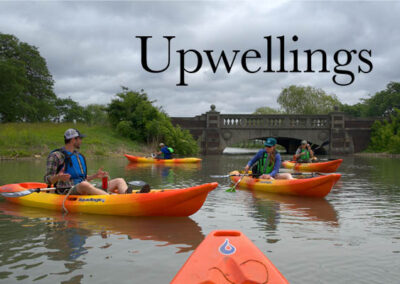The five Great Lakes have more than 10,000 miles of freshwater coastline that border eight states and two countries. Since 2002, there have been at least 150 drownings and more than 300 rescues involving dangerous currents. What environmental factors cause dangerous currents? Can we predict where and when they happen? The following research projects, supported by the NOAA Great Lakes Coastal Storms Program, are actively seeking to answer these questions and ultimately improve beach safety observations, predictions and risk communication.
Community-based Research to Understand Lake Superior Coastal Storms Risk and Vulnerability at Au Train, Mich.
Project Lead: Michigan Technological University – Guy Meadows
Partner: Alger Conservation District
Geographic scope: Au Train, Mich.
Guy Meadows, director of the Great Lakes Research Center at Michigan Technological University, has been researching dangerous currents and weather conditions for many years. Part of his research project involves using hydrodynamic modeling programs which can quantify nearshore current and wave patterns, coastal morphology and sediment transport. This information is helpful for understanding and predicting interaction between water level changes, rip currents, coastal erosion/deposition and storm events. This research is helping to further our understanding of the hydrodynamics of rip and other dangerous currents.
More on Guy Meadows and the Great Lakes Research Center at Michigan Tech
MyBeachCast
Project Lead: Great Lakes Commission – Christine Manninen
Partners: LimnoTech
Geographic Scope: Great Lakes
Research on best practices for safer beaches shows that real-time public information is important. Finding current information on beaches around the Great Lakes is made easier with the MyBeachCast webpage and smartphone app. Beach locations, dangerous current advisories, beach health and safety, as well as wind, wave and temperature information is all available within a single, convenient application.
Development of an Observation, Forecasting and Warning System for Rip Currents
Project Lead: University of Wisconsin-Madison – Chin Wu
Partners: Minnesota Sea Grant College Program, National Oceanic and Atmospheric Administration (NOAA)/National Ocean Service, University of Wisconsin Sea Grant Institute, Wisconsin Coastal Communities Working Group
Geographic Scope: Duluth, Minn., Milwaukee, Wis. and Port Washington, Wis
This multilateral partnership is developing an innovative and cost-effective means to characterize, identify and detect rip currents to improve rip current beach hazard warning. The group works with real time data and observations using the Integrated Nowcast Observation and Forecast Operation System (INFOS). Knowing when and where rip currents strike is the first step. The group is also developing a system of coordinated communication, outreach and education to bolster any warning system that is created.
Real-time Rip Current Watch at Port Washington, Wisconsin
Click photo to see more images of research on Flickr
Implementing Dangerous Currents Best Practices
Project Lead: Michigan Sea Grant College Program
Partners: Illinois-Indiana Sea Grant College Program, Illinois State Coastal Management Program, Indiana Lake Michigan Coastal Program, Michigan Coastal Management Program, University of Wisconsin Sea Grant Institute, Wisconsin Coastal Management Program
Geographic Scope: Illinois, Indiana, Michigan, Minnesota, Ohio and Wisconsin
Michigan Sea Grant is leading a team of outreach specialists focused on reducing the risk of drowning from dangerous currents. This expands upon Sea Grant’s 20-year focus on public outreach efforts to help reduce dangerous current-related fatalities. Using refined messaging and recently developed risk communication techniques, the social media outreach team has implemented a campaign targeting at-risk demographics. The project has also provided thousands of dollars worth of beach safety equipment to beaches across the Great Lakes region.


